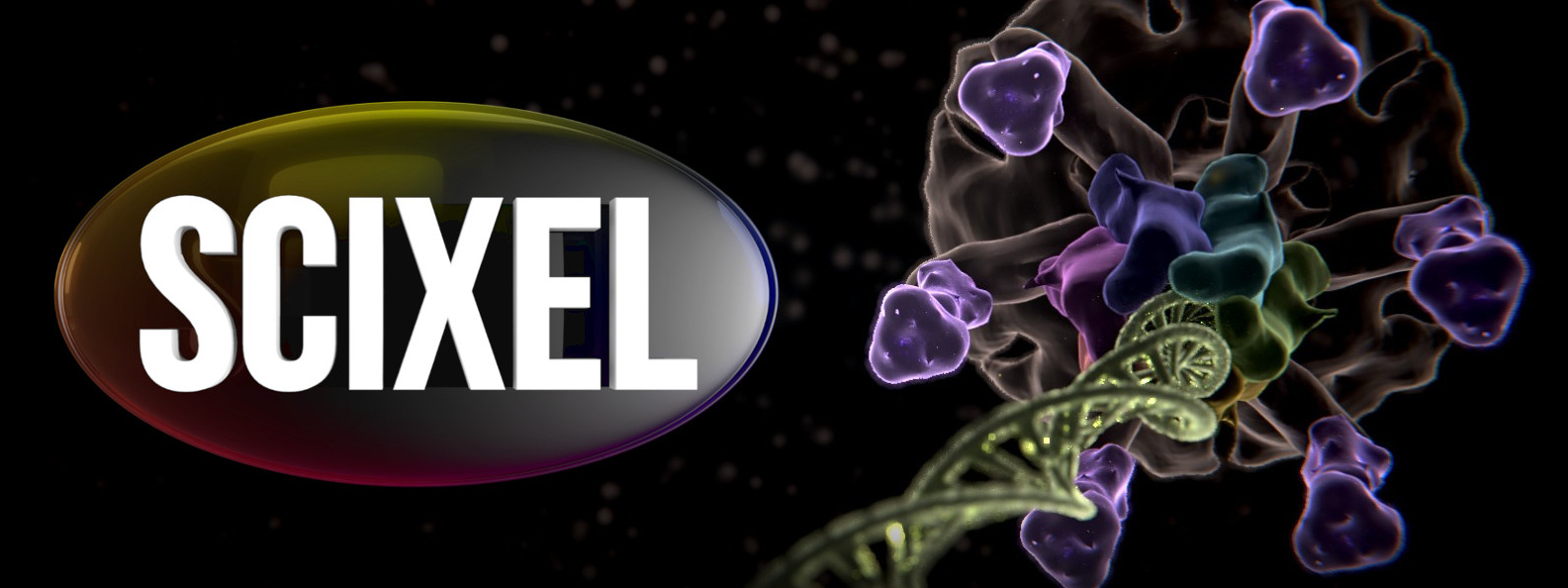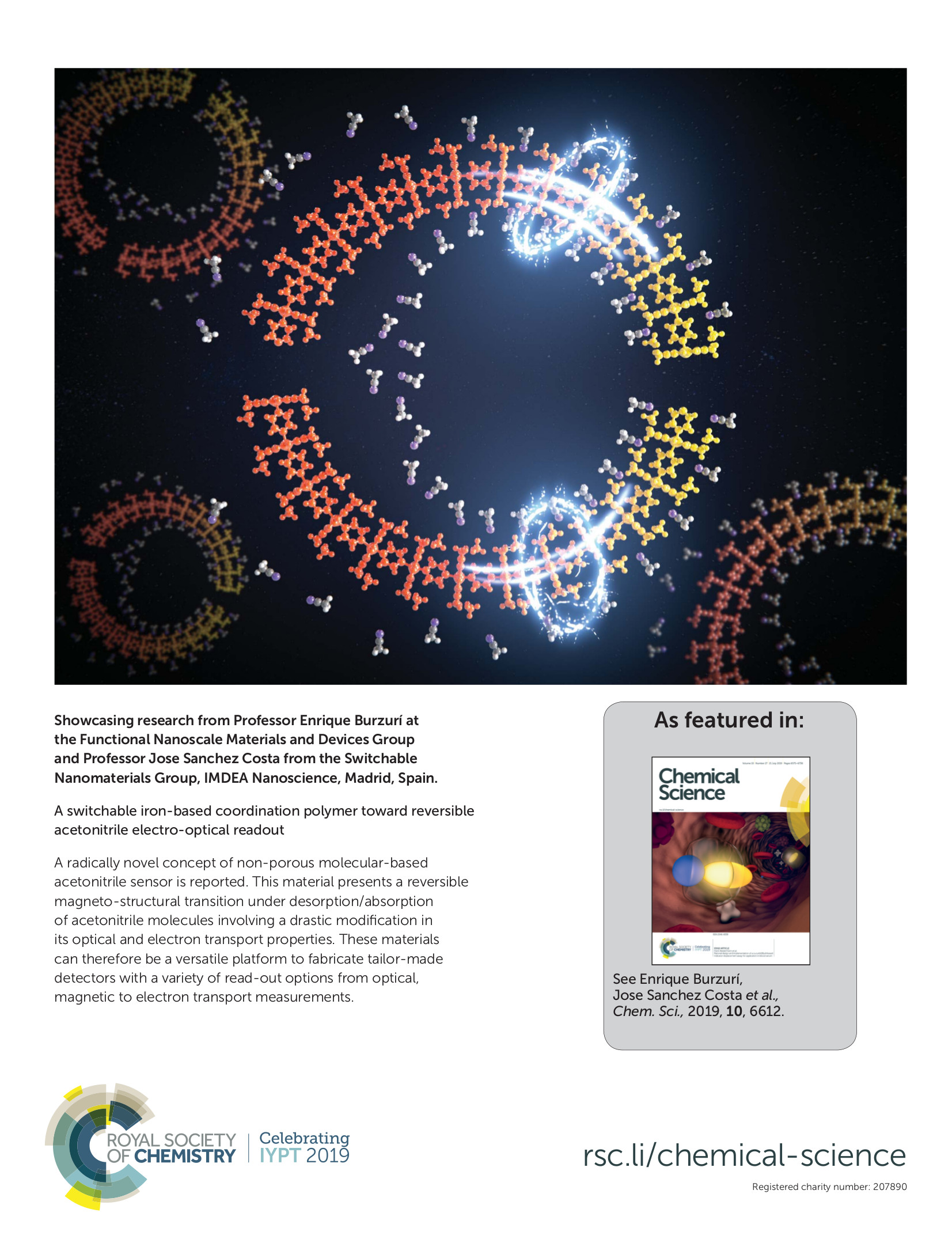A research group at IMDEA Nanociencia (together with the University of Grenoble and Berkeley) have presented a new switchable iron-based coordination polymer, which works as a reversible acetonitrile sensor.
Coordination polymers are emerging as molecular sensing materials for a variety of reasons: they are not toxic, environmentally friendly and above all, they’re highly responsive to a wide variety of external stimuli.
This polymer in particular, the unutterable ∞{[Fe(H2O)2(CH3CN)2(pyrazine)](BF4)2·(CH3CN)2}, happens to be an excellent acetonitrile sensor: a toxic volatile organic compound, that makes its detection a major issue. The desorption of interstitial acetonitrile changes reversibly the color of the polymer together with its electronic and magneto–structural properties.
On request of José Sánchez Costa and Enrique Burzuri we made this picture, showing the reversibility of the process, that made it to the back cover of Chemical Science.

